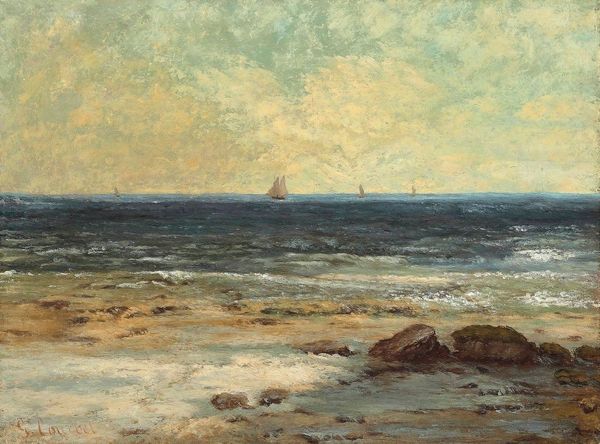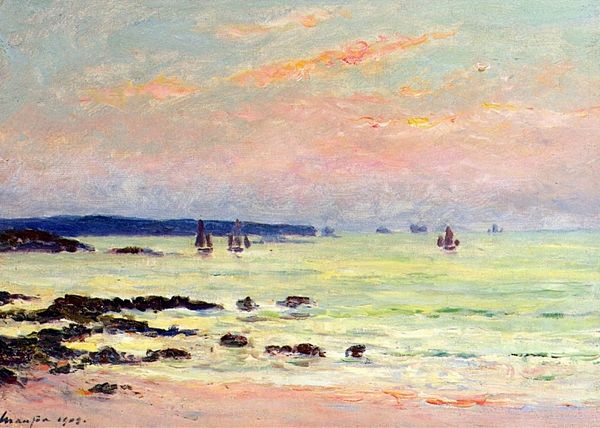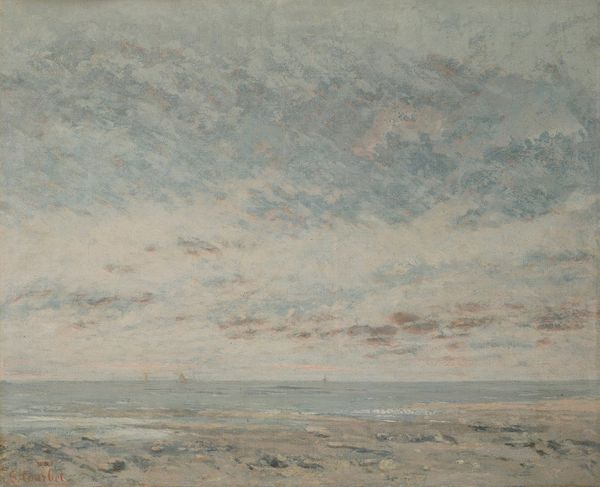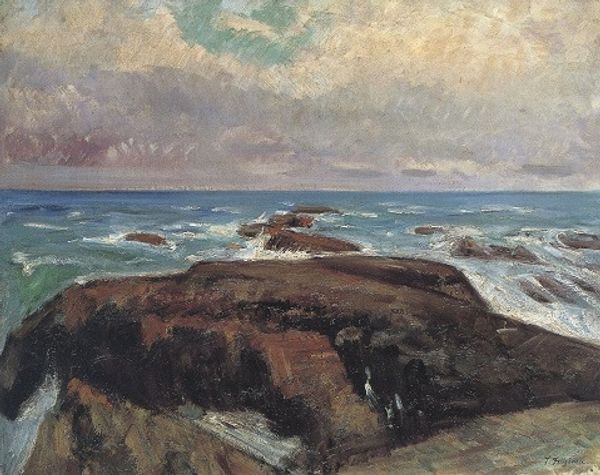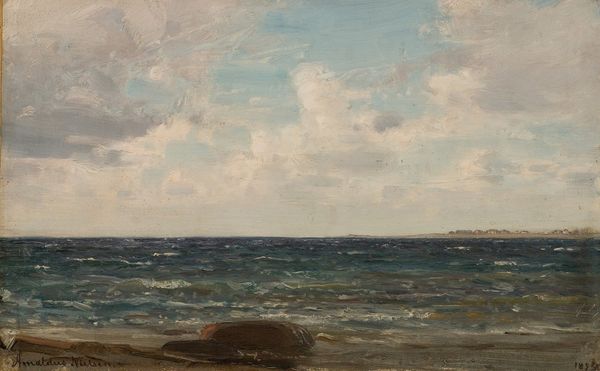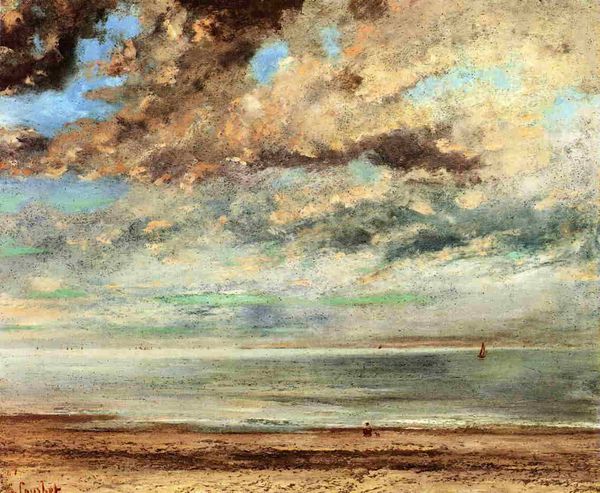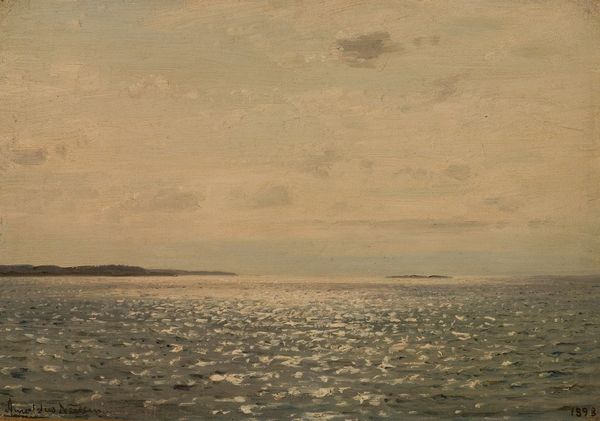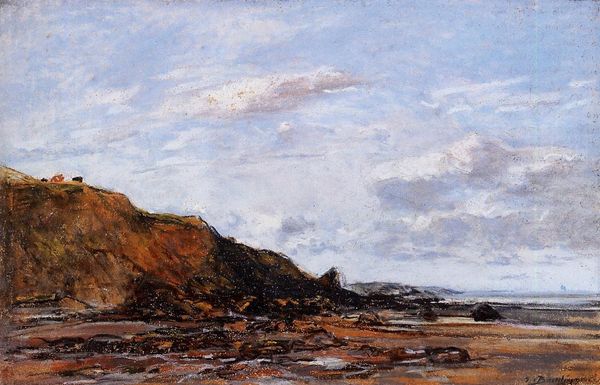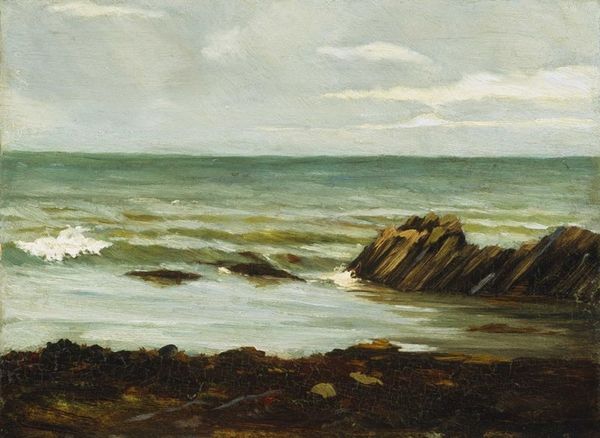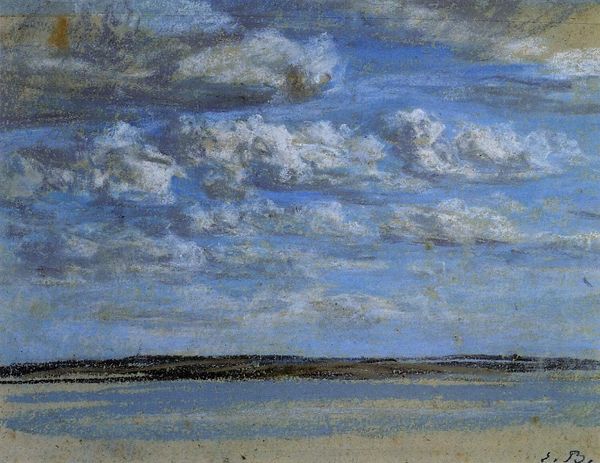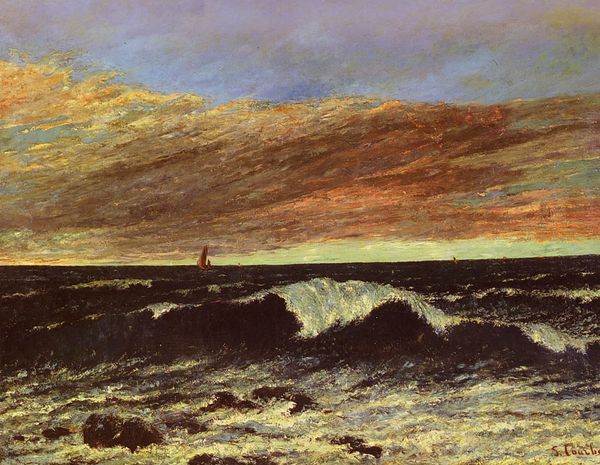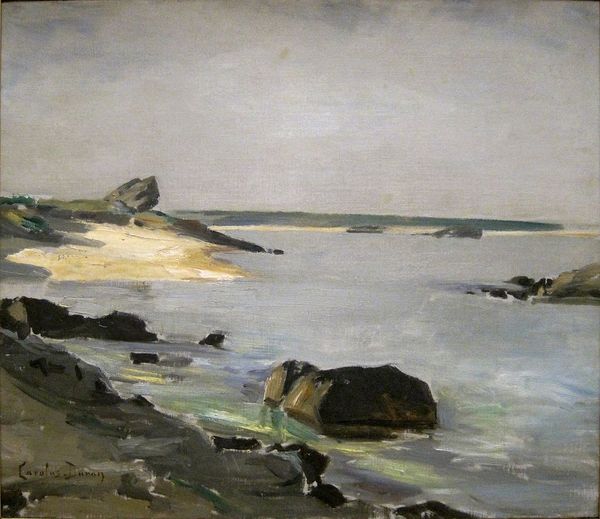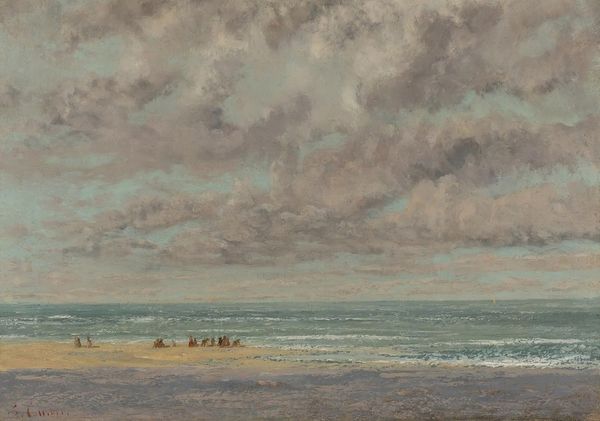
Dimensions: 105 x 128 cm
Copyright: Public domain
Curator: Gustave Courbet’s "Sea Coast in Normandy," completed in 1867, presents us with a study in the raw power of nature. It’s currently held in the Pushkin Museum in Moscow. Editor: The first thing that strikes me is the overwhelming weight of the sky. It feels heavy, almost pressing down on the scene. Curator: Observe how Courbet constructs that sky; layers upon layers of brushstrokes create a dynamic, almost turbulent texture. The impasto technique is quite prominent here. Note the visible peaks and valleys in the paint itself, a testament to Courbet’s material-focused approach. Editor: Absolutely. And how that textural dynamism contrasts with the relatively smooth, still expanse of the sea. It's an interesting juxtaposition, speaking perhaps to the fluctuating fortunes of a maritime nation, considering the rise and fall of French colonial endeavors at this moment in history. Curator: Fascinating to bring that context to bear. I read the ocean less narratively, more as a formal element – its flatness acting as a grounding force beneath the vivacity above. The dark blues against the beige sands of the foreground creates a spatial push and pull. The eye travels into the composition because of these stark contrasts. Editor: Yes, I see what you mean about the compositional tension, even while my mind keeps going back to what a stark change of pace the image would have struck its original audiences. At this point, landscape art generally idealized nature, but Courbet has painted a very literal, unglamorous reality. We can consider his Realism in relation to the rise of Naturalism in literature, seeking similar modes of expression. Curator: True, Courbet's "Sea Coast" exemplifies Realism by rendering an unvarnished, tangible scene with a focus on verifiable, sensory experience. It rejects classical idealization in favor of direct observation. The materiality of paint enhances this aim toward presenting the physical truth. Editor: On reflection, this work shows us both the formidable energy of nature and the emerging energy of a world on the brink of profound transformation, both artistically and socio-politically. Curator: Yes. Whether you read the ocean narratively, as a sign, or compositionally, as I was leaning towards, its presence speaks to something profound about capturing a fleeting, truthful experience.
Comments
No comments
Be the first to comment and join the conversation on the ultimate creative platform.
